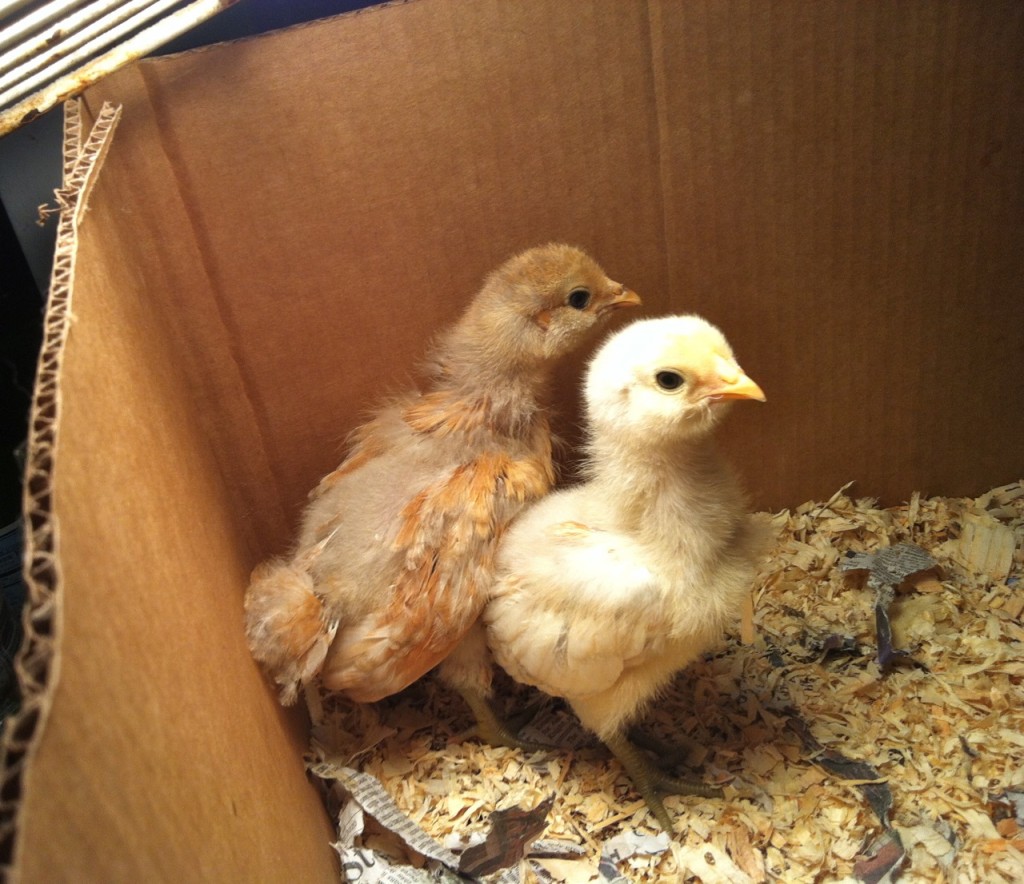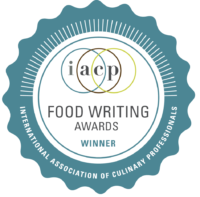Meet Precious and Steve, hens in the making. More about them later.
This past weekend I attended Edible Institute, which is held each spring by Edible Communities. It is a weekend-long event in which food writers and publishers, educators, chefs, artisans, farmers, ranchers, fishermen, wine makers and others affiliated with the food industry gather to discuss issues related to healthy food, sustainability, farm-to-fork initiatives, food politics and policy, farming, farm worker issues, food safety…you name it.
Helena, my friend and hostess during my Santa Barbara stay (and owner of Steve and Precious), always asks what I’ve gleaned from the weekend and what I might write about it. I’m glad she does this, for it prevents me from getting lazy and putting off the info processing. And since I always experience information overload, putting it off is easy to do. As the kid asks his teacher in the Far Side cartoon, “May I be excused? My brain is full.”
So here are some things that really stuck with me from this weekend:
> The wisdom of our keynote speaker, food politics superstar Marion Nestle, who said, “Don’t eat products–eat food.”
The first thing Marion wrote that I remember reading several years ago was her admonition to shop only in the periphery of the grocery store. This will keep you out of the center aisles where all the processed, high-salt, high-sugar, high-fat pseudo-foods lurk, so that you spend more time in the fresh fruit and vegetable, dairy and meat sections, focusing on real food. I’ve been dedicated to this philosophy ever since. I park my cart on the ends of the aisles and only venture down them if I need to fetch particular items like oatmeal, flour, coffee, wine, light bulbs and cat litter. And I’ll be honest–the occasional emergency bag of Cheetos.
> Guner Tautrim of Orella Ranch urged us all to, “Put your dollars in the change you want to see.”
If we want more readily available healthy food, we must buy it whenever we can, instead of the processed stuff. This sends the message to suppliers that we want better food options. Admittedly this can be difficult. As Marion pointed out, when you can go to a fast food chain, hand them $5 and receive either five burgers or one salad, then you see the dilemma for those who don’t make much money and have a family to feed. But it is worth our effort to make healthy choices whenever possible, for both the personal good and the collective good it can do in the long run.
> The panel on school lunches addressed the question: What if the school lunch room was treated as a classroom, with cooking skills (a.k.a. life skills) being incorporated into education for K-12? When kids learn to cook, they also learn about science and math, which creates a much more integrated approach to learning. As for school yard gardens, plenty of anecdotal evidence shows that even when kids don’t like a particular vegetable, they’ll eat it if they grow it themselves. Pride of having planted, tended and harvested wins out over a case of the pickys almost every time.
There’s so much more, more than I can cover in a blog entry–in fact, more than we could cover in one weekend. This is tip of the tip of the iceberg. The problems are many and the solutions, not always easy to divine. But it’s worth the effort to do whatever we can.
So back to Steve and Precious, hens in the making and named, I might add, by Helena’s young grandchildren (Eggs à la Steve will be on the menu soon!). At this point the chicks are sporting a funky combo of chick down and grown-up chicken feathers. They’re not ready to take their place in the yard with the other ladies just yet. But soon they’ll be out there, scratching, pecking and producing great free range, organic eggs.
What Steve and Precious are up to is a natural thing, and their maturation will take place regardless of what they think about it. The rest of us are another matter. We can choose to cling to our easy but dead-end wasteful and toxic ways, or we can take more responsibility for our health and the health of those whom we feed. And the health of the planet. Even baby steps are better than nothing–which was my conclusion from last year’s Edible Institute, come to think of it. So this year’s Edible Institute was a reaffirmation of last year’s, but with more evidence and more advice on moving forward.
Want to learn more? Check out these resources:
Consult these!
Read these!
Anything at all by Marion Nestle. Start with Food Politics and What To Eat. She also contributed to A Place at the Table, a collection of essays on solving hunger in America, written by an impressive array of people active on the front lines.
Tomatoland, by Barry Estabrook
The American Way of Eating, by Tracie McMillan
American Wasteland, by Jonatham Bloom
Watch these!
Go online and watch The Perennial Plate.
This is the most original, enjoyable and thought provoking collection of online videos about food, real food. They’re each only about 5 or 6 minutes long. You know, bite-sized! You’ll never look at those food shows on the telly the same way again. This is good stuff.
Here’s a great overview piece to whet your appetite. I especially love Episode 93: “Joseph’s Fields,” which reveals the secret to sweetening collards while adding absolutely nothing to them.
Dig in everyone!
















